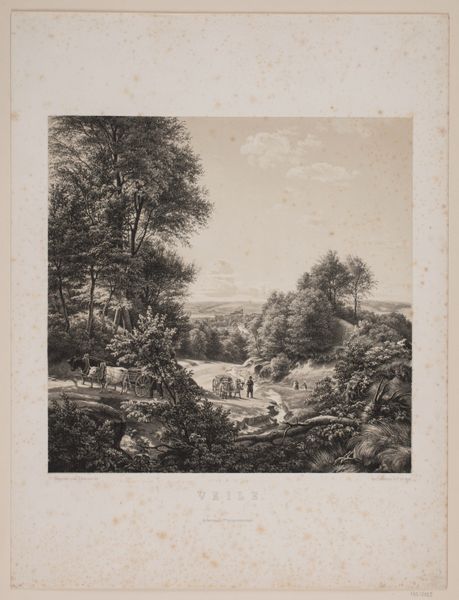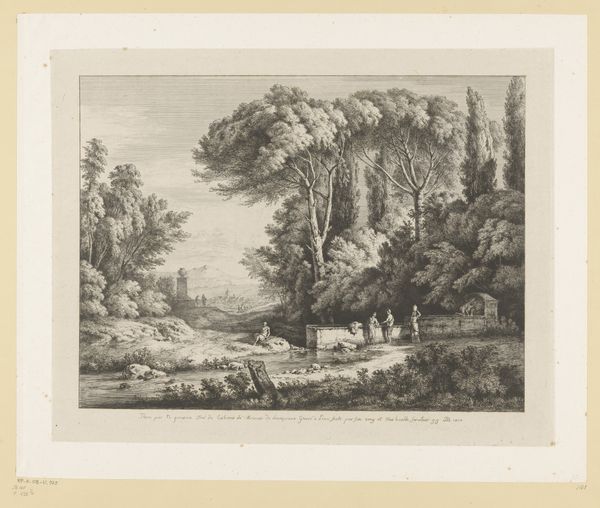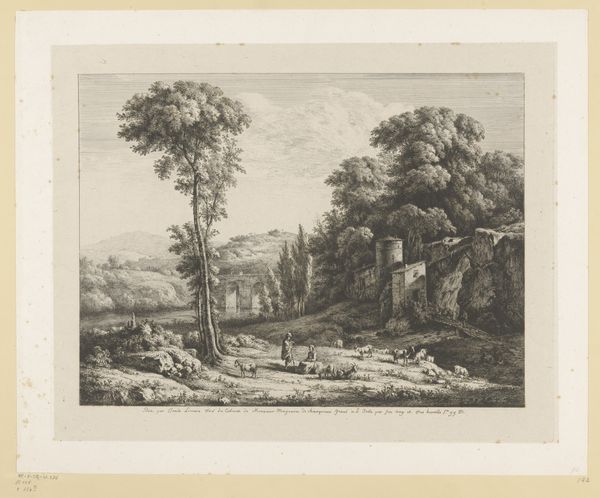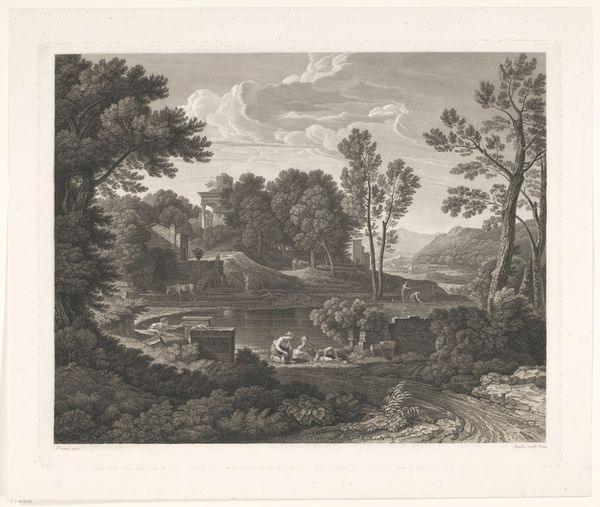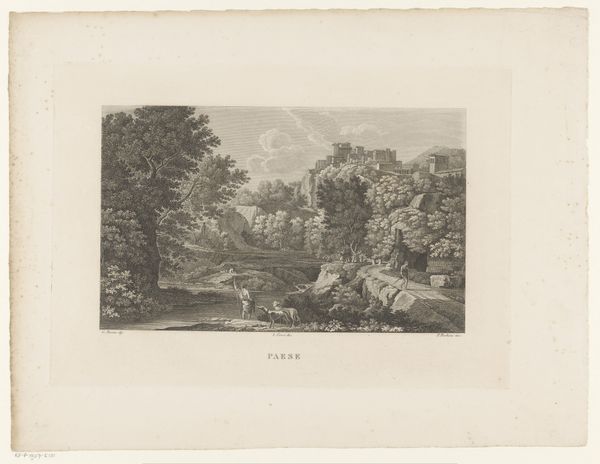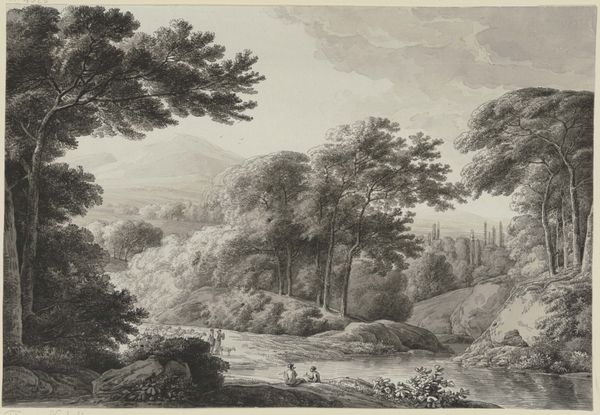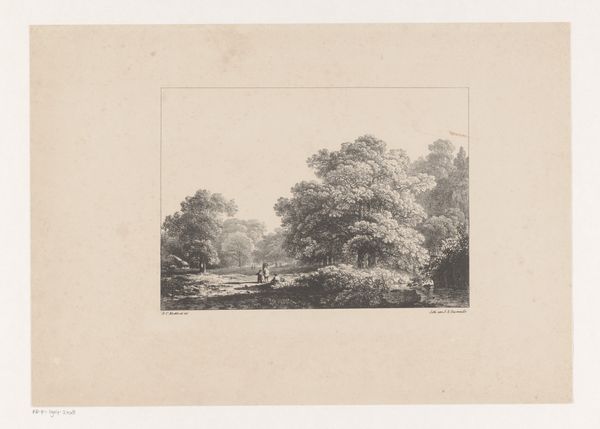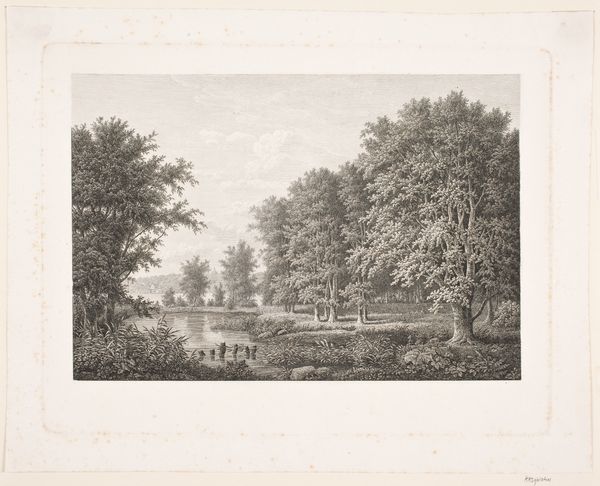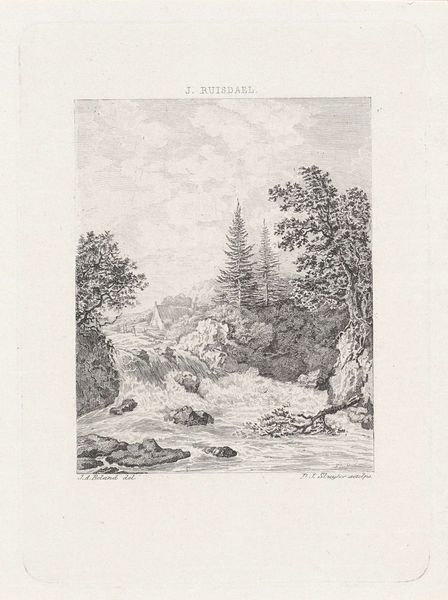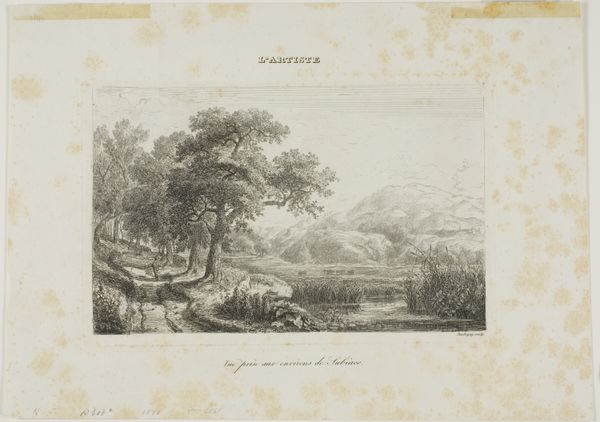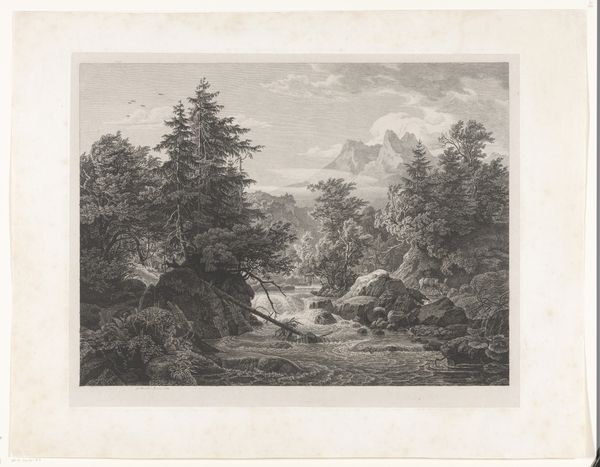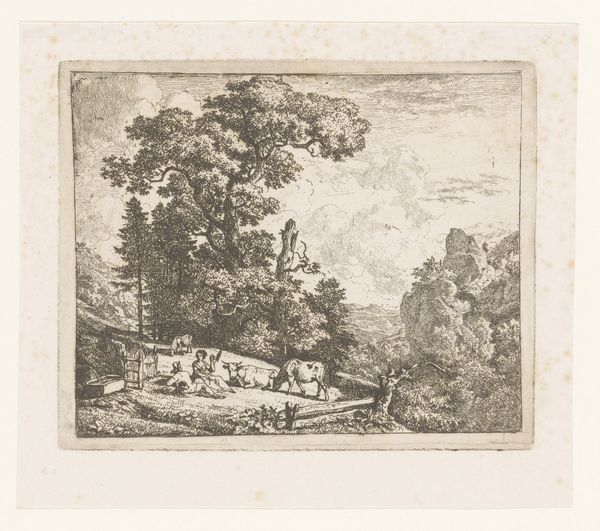
drawing, print, engraving
#
drawing
# print
#
landscape
#
romanticism
#
engraving
Dimensions: image: 10.16 × 14.92 cm (4 × 5 7/8 in.) plate: 15.08 × 20.64 cm (5 15/16 × 8 1/8 in.) sheet: 18.89 × 24.77 cm (7 7/16 × 9 3/4 in.)
Copyright: National Gallery of Art: CC0 1.0
Editor: This is "The Lochmühle in the Liebethal, in "Saxon Switzerland," an engraving by Philipp Veith, around 1824. It's incredible how much detail he managed to achieve! What particularly strikes me is the idyllic, almost idealized scene of the mill. How do you read it? Curator: Looking at the engraving process itself, consider the labour involved in creating this image, especially compared to painting. Every line, every gradation, carefully etched into the plate. This highlights a certain mode of artistic production, and asks, who owned this mill? Who worked there? These landscapes romanticize rural labor, often obscuring the realities of exploitation and production during this era. What impact did the actual mill have on its environment and its community? Editor: That's a fascinating point! I was so focused on the visual harmony that I missed the questions about the mill's real impact and the labor involved in both the milling process and the artistic process. Do you think this idealization was intentional? Curator: Absolutely. This image participated in a burgeoning tourist industry, selling an image of Saxony that tourists would desire. Prints like these helped define the popular view of landscape. What’s omitted is just as important as what’s shown, considering that, we have to examine it not just as an image of nature but as a carefully constructed commodity. It serves as an invitation to consume the experience. Editor: So, the value lies not only in its aesthetic appeal but also in its role in promoting a particular version of reality for consumption. That's a perspective shift for me, really makes you think about how art serves various social and economic purposes. Curator: Exactly. It challenges the way we traditionally think of landscape art and expands our appreciation to understand the networks of labor, capital, and consumption that constitute art’s existence.
Comments
No comments
Be the first to comment and join the conversation on the ultimate creative platform.
